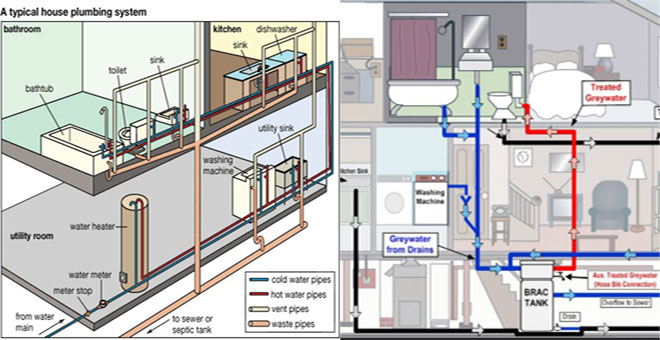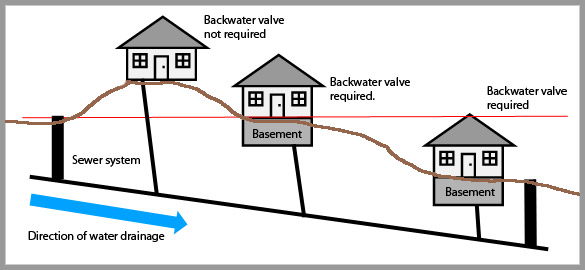Everything You Need to Know to Your Property's Plumbing System Anatomy
Request Free EstimateHow do you feel in regards to Plumbing Installation 101: All You Need to Know?

Comprehending exactly how your home's plumbing system works is crucial for every property owner. From providing tidy water for drinking, cooking, and showering to safely eliminating wastewater, a properly maintained plumbing system is important for your family's wellness and comfort. In this extensive guide, we'll check out the detailed network that makes up your home's plumbing and deal tips on upkeep, upgrades, and handling typical issues.
Intro
Your home's pipes system is greater than simply a network of pipes; it's a complicated system that ensures you have access to clean water and effective wastewater removal. Understanding its parts and how they work together can aid you protect against expensive repair services and make sure whatever runs smoothly.
Standard Components of a Pipes System
Pipelines and Tubes
At the heart of your plumbing system are the pipelines and tubing that lug water throughout your home. These can be constructed from numerous products such as copper, PVC, or PEX, each with its benefits in terms of toughness and cost-effectiveness.
Components: Sinks, Toilets, Showers, etc.
Fixtures like sinks, commodes, showers, and tubs are where water is utilized in your home. Comprehending exactly how these fixtures attach to the pipes system assists in identifying issues and intending upgrades.
Valves and Shut-off Points
Valves manage the circulation of water in your pipes system. Shut-off shutoffs are crucial during emergencies or when you need to make repair work, permitting you to isolate parts of the system without disrupting water flow to the entire house.
Water System System
Key Water Line
The main water line connects your home to the municipal water supply or a private well. It's where water enters your home and is dispersed to numerous components.
Water Meter and Pressure Regulator
The water meter actions your water usage, while a pressure regulatory authority makes certain that water moves at a safe pressure throughout your home's plumbing system, preventing damages to pipelines and components.
Cold Water vs. Warm water Lines
Comprehending the difference in between cold water lines, which supply water straight from the major, and hot water lines, which carry warmed water from the hot water heater, helps in fixing and preparing for upgrades.
Water drainage System
Drain Pipes Water Lines and Traps
Drain pipelines carry wastewater far from sinks, showers, and bathrooms to the sewage system or septic tank. Catches avoid sewer gases from entering your home and likewise trap particles that can cause blockages.
Air flow Pipes
Ventilation pipelines enable air into the drainage system, avoiding suction that might reduce water drainage and create traps to vacant. Correct air flow is essential for keeping the integrity of your pipes system.
Importance of Proper Drainage
Guaranteeing correct water drainage protects against backups and water damage. Regularly cleaning up drains pipes and maintaining traps can stop costly repair work and extend the life of your plumbing system.
Water Heater
Sorts Of Hot Water Heater
Water heaters can be tankless or traditional tank-style. Tankless heating units heat water as needed, while containers keep warmed water for instant use.
Just How Water Heaters Attach to the Pipes System
Understanding how water heaters connect to both the cold water supply and warm water circulation lines helps in identifying concerns like not enough hot water or leaks.
Maintenance Tips for Water Heaters
Regularly flushing your hot water heater to get rid of debris, examining the temperature settings, and checking for leaks can extend its life-span and enhance energy performance.
Usual Plumbing Concerns
Leakages and Their Causes
Leakages can take place as a result of maturing pipes, loosened installations, or high water pressure. Addressing leakages without delay protects against water damage and mold and mildew development.
Blockages and Clogs
Blockages in drains pipes and bathrooms are often brought on by purging non-flushable products or a build-up of oil and hair. Using drain screens and bearing in mind what decreases your drains can avoid blockages.
Signs of Pipes Issues to Expect
Low water stress, slow-moving drains, foul odors, or uncommonly high water costs are signs of potential pipes troubles that should be dealt with quickly.
Plumbing Maintenance Tips
Normal Inspections and Checks
Set up yearly plumbing examinations to capture issues early. Try to find indications of leakages, corrosion, or mineral buildup in taps and showerheads.
DIY Maintenance Tasks
Basic jobs like cleaning faucet aerators, checking for commode leakages making use of dye tablets, or insulating subjected pipes in cold climates can avoid significant plumbing problems.
When to Call a Professional Plumber
Know when a plumbing issue requires professional knowledge. Trying complex repair services without correct understanding can bring about even more damages and greater repair service prices.
Upgrading Your Plumbing System
Factors for Upgrading
Upgrading to water-efficient components or changing old pipes can enhance water top quality, lower water bills, and raise the worth of your home.
Modern Plumbing Technologies and Their Advantages
Discover modern technologies like wise leak detectors, water-saving bathrooms, and energy-efficient water heaters that can save money and lower environmental impact.
Expense Considerations and ROI
Determine the ahead of time expenses versus lasting cost savings when considering plumbing upgrades. Several upgrades spend for themselves through lowered energy bills and fewer repair services.
Environmental Effect and Conservation
Water-Saving Components and Home Appliances
Installing low-flow taps, showerheads, and toilets can dramatically minimize water usage without compromising performance.
Tips for Decreasing Water Use
Simple routines like fixing leaks immediately, taking shorter showers, and running full loads of laundry and recipes can preserve water and lower your utility bills.
Eco-Friendly Pipes Options
Think about lasting pipes products like bamboo for floor covering, which is durable and environmentally friendly, or recycled glass for countertops.
Emergency situation Preparedness
Steps to Take Throughout a Pipes Emergency
Know where your shut-off shutoffs are located and how to shut off the water system in case of a burst pipe or significant leakage.
Importance of Having Emergency Get In Touches With Helpful
Keep call info for regional plumbing technicians or emergency situation solutions readily offered for quick action during a pipes situation.
Do It Yourself Emergency Fixes (When Suitable).
Momentary solutions like using duct tape to patch a leaking pipe or positioning a container under a trickling faucet can lessen damage until a specialist plumbing technician shows up.
Verdict.
Comprehending the composition of your home's pipes system empowers you to preserve it effectively, conserving time and money on repair work. By complying with regular upkeep regimens and remaining informed concerning modern-day plumbing technologies, you can ensure your pipes system runs effectively for years to come.
HOW YOUR PLUMBING SYSTEM WORKS
Which Pipes Do What?
Blue lines = fresh water supply entering the building
Red lines = hot water supply entering the building
Grey lines = pipes carrying waste away from the building and venting pipes carrying gases away from the building (through the roof)
YOUR MAIN PLUMBING SYSTEMS
There are two main plumbing systems that support your home s basic plumbing needs one that brings clean water into your home, and one that sends dirty water away from your home. Connected to the toilet, bath, shower, and other faucets in your home, these two systems keep your water flowing in the right directions.
ACCESSING FRESH WATER
Fresh and clean water is brought into your home through the main water supply line . Filtered through one pipe, this water is pressured to flow into the various fixtures in your home at any given time.
This water can be sourced from a well located on your property, a pond or river (mostly cottages), or, as in most cases, from the city s municipal water treatment centre. However, it is important to note that water that is untreated, such as the water siphoned from ponds or rivers, may not be safe to drink. Personal water supplies always need to be treated for hardness and contaminants before consumed.
MUNICIPAL WATER SUPPLIES
Improve taste and odour
Remove sediment
Eliminate hardness
Reduce chlorine
COLD WATER SUPPLY VS. HOT WATER SUPPLY
Cold water flows into your home or building through the service line, which then distributes hot or cold water to your fixtures. This line is most commonly run through a central column that runs floor to floor. Hot water runs in short and straight pipes as the longer the pipeline, the more heat that will be lost in the transfer. Having shorter pipes also allows residents to access hot water more quickly.
WASTE WATER SYSTEM
Your wastewater system is divided into two parts pipes that send wastewater away from your home and venting pipes that send sewer gas away from your home. Sewage water travels through pipes that flush the water and waste towards local sewers that are operated and managed by your city or town. Most sewer systems rely on gravity to move the wastewater to where it needs to go.
The further away from your toilet or sink, the larger wastewater pipes become. This allows for waste to be disposed of from various parts of your home or business at once without pipe blockages. The angle and flow of these pipes are also essential for keeping your waste pipes clear of build up.
https://harrisplumbing.ca/how-your-home-plumbing-system-works/

HOW YOUR PLUMBING SYSTEM WORKS
Which Pipes Do What?
YOUR MAIN PLUMBING SYSTEMS
There are two main plumbing systems that support your home s basic plumbing needs one that brings clean water into your home, and one that sends dirty water away from your home. Connected to the toilet, bath, shower, and other faucets in your home, these two systems keep your water flowing in the right directions.
ACCESSING FRESH WATER
Fresh and clean water is brought into your home through the main water supply line . Filtered through one pipe, this water is pressured to flow into the various fixtures in your home at any given time.
This water can be sourced from a well located on your property, a pond or river (mostly cottages), or, as in most cases, from the city s municipal water treatment centre. However, it is important to note that water that is untreated, such as the water siphoned from ponds or rivers, may not be safe to drink. Personal water supplies always need to be treated for hardness and contaminants before consumed.
MUNICIPAL WATER SUPPLIES
COLD WATER SUPPLY VS. HOT WATER SUPPLY
Cold water flows into your home or building through the service line, which then distributes hot or cold water to your fixtures. This line is most commonly run through a central column that runs floor to floor. Hot water runs in short and straight pipes as the longer the pipeline, the more heat that will be lost in the transfer. Having shorter pipes also allows residents to access hot water more quickly.
WASTE WATER SYSTEM
Your wastewater system is divided into two parts pipes that send wastewater away from your home and venting pipes that send sewer gas away from your home. Sewage water travels through pipes that flush the water and waste towards local sewers that are operated and managed by your city or town. Most sewer systems rely on gravity to move the wastewater to where it needs to go.
The further away from your toilet or sink, the larger wastewater pipes become. This allows for waste to be disposed of from various parts of your home or business at once without pipe blockages. The angle and flow of these pipes are also essential for keeping your waste pipes clear of build up.
https://harrisplumbing.ca/how-your-home-plumbing-system-works/
Hopefully you enjoyed reading our piece about Plumbing Installation 101: All You Need to Know. Many thanks for spending some time to read our short article. Do you know about somebody else who is curious about the niche? Why not share it. Bless you for being here. Please stop by our site back soon.
Suggested Site